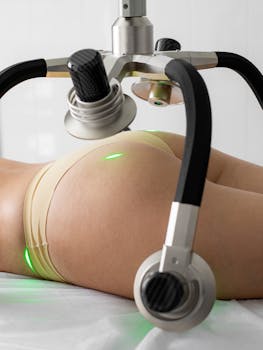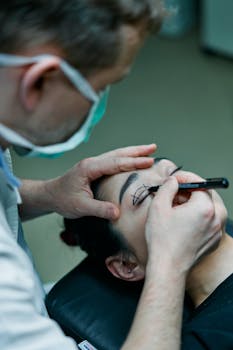Deciding between fat transfer vs implants is a common question for people exploring breast enhancement. Both approaches can create fuller breasts, but they differ in technique, recovery, longevity and the kinds of results they reliably achieve. This guide breaks down key differences so you can discuss options confidently with a board-certified plastic surgeon and choose an approach that matches your goals, anatomy and lifestyle.
Fat transfer versus implants: key differences at a glance
At a basic level, fat transfer (also called fat grafting) uses your own body fat harvested through liposuction and injected into the breast, while implants involve placing a silicone or saline device under the breast tissue or chest muscle. Each method has advantages: fat transfer provides subtle, natural-looking augmentation with no foreign object, whereas implants can produce larger, predictable volume changes.
Procedure and recovery
Fat grafting combines two procedures: harvesting fat from donor areas (abdomen, thighs, flanks) and carefully injecting purified fat into the breasts. Recovery includes healing at both the liposuction sites and injected areas, with mild-to-moderate swelling and soreness. Implants usually require a single surgical site and often a more pronounced immediate change; recovery may involve more chest tightness and a slightly different activity restriction depending on whether the implant is placed under the muscle.
Results and predictability
One trade-off with fat transfer is partial resorption: a portion of the transferred fat may be reabsorbed over weeks to months, so surgeons often plan for staged treatments to reach the desired volume. Implants offer a very predictable, long-term volume and shape from the outset, making them preferable for patients seeking a significant increase or a specific contour. For those comparing breast implants vs fat transfer, consider whether gradual, subtle enhancement or immediate, substantial change is the priority.
Natural feel and scarring
Fat grafting typically yields a very natural feel because it uses your own tissue and avoids creating a distinct implant pocket. Scarring is limited to tiny liposuction and injection points. Implants can also be made to feel natural, especially modern silicone gels, but some patients notice firmness or rippling over time. Implant surgeries involve slightly larger incisions, though many are discreetly placed in the breast crease, around the areola, or the armpit.
Safety and long-term considerations
Both techniques are considered safe when performed by qualified surgeons, but they carry different long-term considerations. Implants may require future replacement or removal, and patients should be aware of rare complications like capsular contracture or implant rupture. Fat grafting results may change with weight fluctuations and can obscure mammogram imaging if not communicated to radiologists; however, many surgeons report good oncologic safety for patients without a history of breast cancer. For a general overview of fat grafting science and history, see this summary: Fat grafting — Wikipedia.
Who is a good candidate?
Ideal candidates for fat transfer typically have enough donor fat and seek modest enhancements or correction of asymmetry, contour defects, or reconstruction touch-ups. Those wanting a larger cup-size increase or who lack sufficient donor tissue are often better suited to implants. If you’re weighing breast implants vs fat transfer, think about body habitus, desired size change, tolerance for possible additional procedures, and whether you prefer implants to achieve a specific shape.
Cost and practical concerns
Costs vary widely based on surgeon, region, facility fees and whether multiple fat grafting sessions are needed. Implants can be more cost-effective for a single, predictable augmentation, while fat transfer may add cost if staged treatments are required. For more on cost expectations and what to expect during recovery from a fat transfer breast augmentation, review this helpful resource on procedure costs and patient experience: What to expect and costs for fat transfer breast augmentation.
Making the decision: questions to ask your surgeon
- Am I a good candidate for fat transfer or implants given my anatomy and goals?
- How much volume can be achieved with one fat transfer session, and will I need more?
- What are the incision locations and scar management strategies for implants?
- How do you manage follow-up imaging and surveillance for each technique?
- Can I see before-and-after photos of patients with similar goals?
- Takeaways:
- Fat transfer offers subtle, natural augmentation but may require staged sessions and depends on available donor fat.
- Implants provide predictable, larger volume increases with a long-term device-related follow-up plan.
- Choose based on desired size change, body shape, tolerance for future procedures, and personal preference for natural tissue versus an implant.
FAQ — Is fat transfer safe for breast augmentation?
When performed by experienced surgeons, fat transfer is generally safe for augmentation and reconstruction. It carries usual surgical risks and a chance of partial fat resorption; discuss your cancer history and imaging plan with your provider to ensure appropriate monitoring.
FAQ — How long do implants last?
Implants are durable but not lifetime devices. Many manufacturers and surgeons recommend monitoring and consider replacement or revision after 10–15 years or sooner if complications occur. Regular follow-up and awareness of symptoms are important.
FAQ — Will fat transfer affect mammograms?
Fat grafting can create changes in breast tissue that radiologists should be aware of. Inform your imaging center and surgeon about prior procedures so appropriate imaging techniques and interpretations are used to maintain effective screening.






